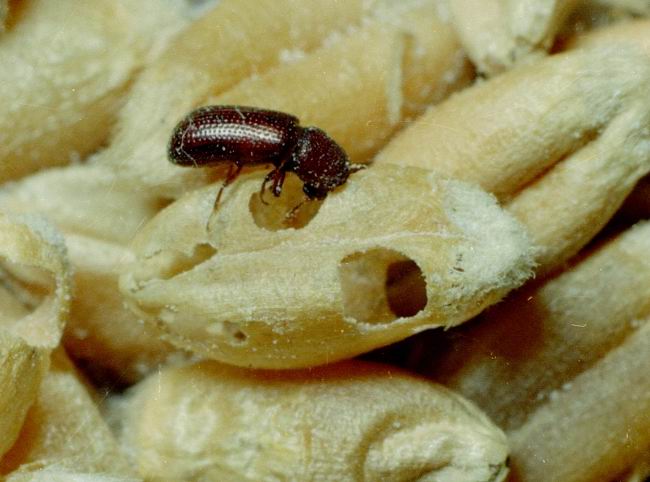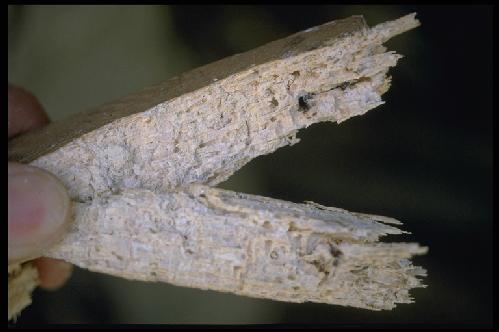Credits: Biovision-Infonet

(c) Clemson University – USDA Cooperative Extension Slide Series, United States, bugwood.org

(c) GTZ
A number of beetles feed on dry cassava causing post harvest losses. In Benin Republic the most common are Dinoderus sp., Carpophilus sp., the coffee bean weevil (Araecerus fasciculatus), the lesser grain borer (Rhizopertha dominica), and more recently, the larger grain borer (Prostephanus truncatus).
Infestation by these insects is heavier in the rainy season than in the dry season, is more prevalent in the humid zone than in the savannah, and is found more in large chips than in smaller ones.
Maximum infestation was found after 6 to 8 months in storage, at which time chips would fall into dust when squeezed (Bokanga, IITA, FAO).
What to do:
- Use botanicals or plant parts to protect stored cassava. There are reports in Kenya, that the larger grain borer can be effectively repelled by storing cassava or grains with a fairly large amount of dried lantana or eucalyptus leaves (Personal communication, field officer of Meru herbs). Neem is also reported to be effective.